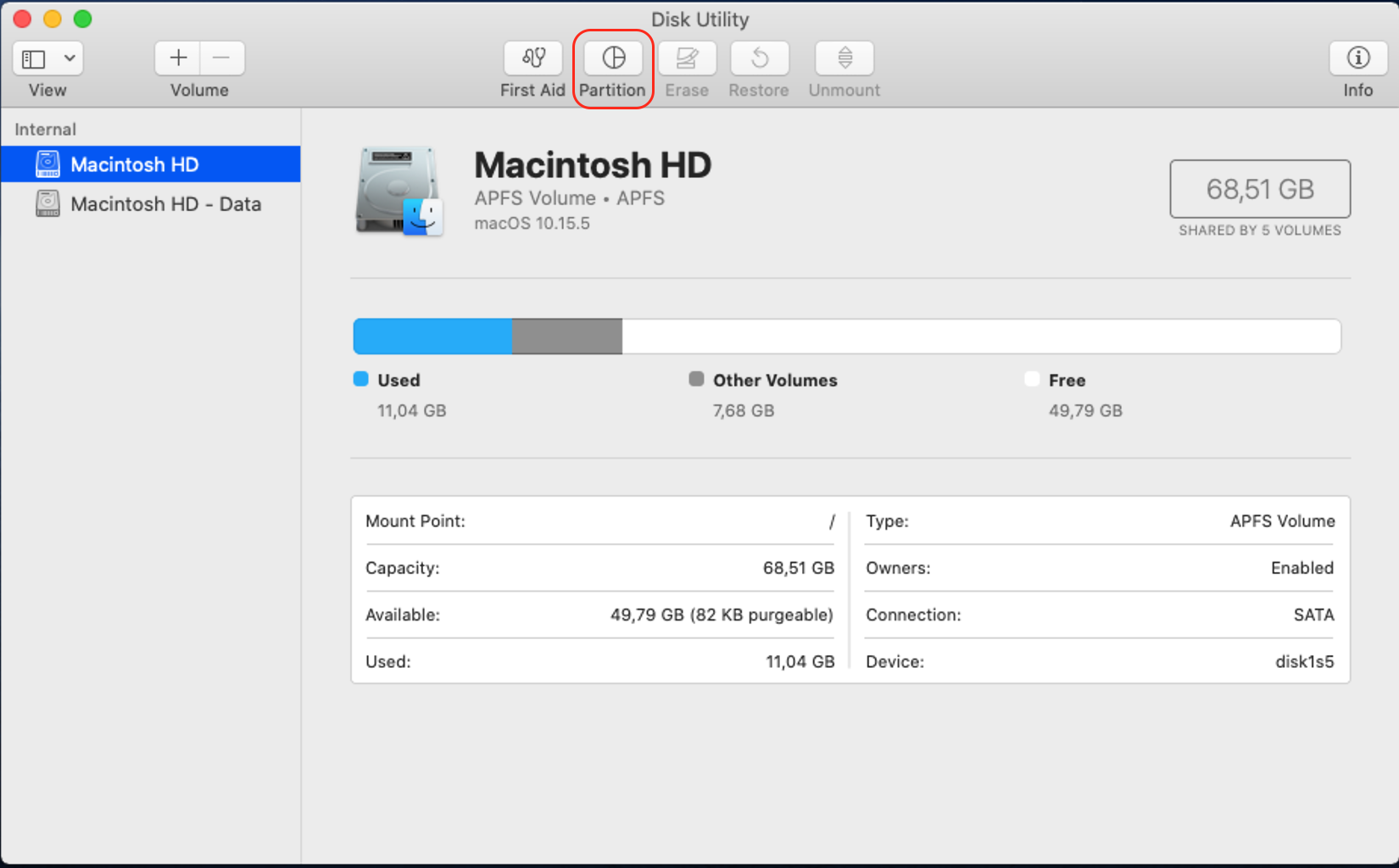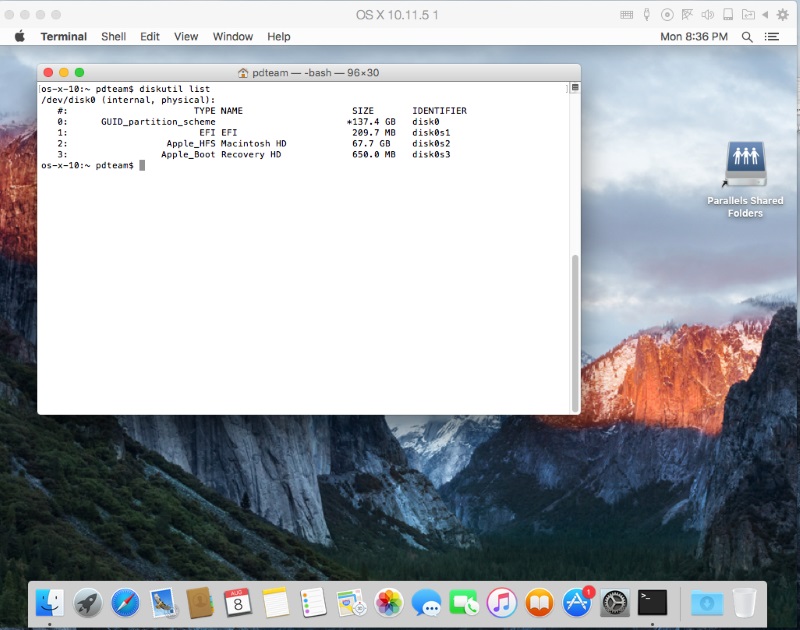

Locate the VM to which you've attached the data disk. Follow the steps below to expand the disk volume and take advantage of the new disk size. OperationId : abcd1234-ab12-cd34-123456abcdefīefore you can take advantage of the new disk size, you need to expand the volume within the OS. Start-AzVM `Īfter a short pause, the output confirms that the machine is successfully started. Id : /subscriptions//resourceGroups/myDemoResourceGroup/providers/Microsoft.Compute/disks/myDemoDataDiskįinally, restart the VM with the Start-AzVM cmdlet. The output confirms the VM's successful creation. PublicIpAddressName "myDemoPublicIpAddress" SecurityGroupName "myDemoNetworkSecurityGroup" ` You're prompted for username and password values for the VM's local administrator account.

Next, use the code to deploy a VM within a new resource group. For example, to specify the Central US region, use $azRegion = "Central US".
#Macos resize partition virtualmachine update
Follow the steps in this section to create one.īefore you begin, find the $azRegion variable located in the first line of sample code and update the value to reflect your desired region. The exercises in this tutorial require a VM. Paste the code into the Cloud Shell session by selecting Ctrl+ Shift+ V on Windows and Linux, or by selecting Cmd+ Shift+ V on macOS. Select the Copy button on a code block to copy the code. To run the code in this article in Azure Cloud Shell: Select the Cloud Shell button on the menu bar at the upper right in the Azure portal. Go to, or select the Launch Cloud Shell button to open Cloud Shell in your browser. Selecting Try It doesn't automatically copy the code to Cloud Shell. Select Try It in the upper-right corner of a code block.
#Macos resize partition virtualmachine install
You can use the Cloud Shell preinstalled commands to run the code in this article, without having to install anything on your local environment. You can use either Bash or PowerShell with Cloud Shell to work with Azure services. Use Azure Cloud ShellĪzure hosts Azure Cloud Shell, an interactive shell environment that you can use through your browser. If you don't have an Azure subscription, create a free account before you begin. You must have an Azure account with an active subscription. Create, attach, and initialize a data disk.


 0 kommentar(er)
0 kommentar(er)
